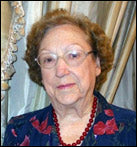
This is a guest blog post. It's authored by special guest blogger Dr. Geraldine Haggard who is a retired teacher, Reading Recovery teacher leader, author, and university teacher. She spent 37 years in the Plano, TX school system. She currently tutors, chairs a committee that gifts books to low-income students, teaches in her church, and serves as a facilitator in a program for grieving children.
INTEGRATING READING AND WRITING INSTRUCTION
The idea of integrating the processes of reading and writing is not a new one. Marie Clay’s research preceding the Reading Recovery guidelines proved that the best teachers with the most successful students used the processes concurrently. Smith of Canada called the idea
Readers and Writers Club.
Barbara Watson of New Zealand stated that the linking of reading and writing improved both processes.
I spent two weeks in New Zealand visiting schools in Auckland in 1987. I saw children of all ages writing books and original compositions. They read books that they had written and used their word knowledge as they read and wrote. I would like to share my research findings, personal observations of teachers who are successful, what I found to be true in my work as a Reading Recovery teacher, and what I discovered as I tutored children in the primary grades after my retirement.
These are the reasons that I feel the integration of the two processes is of extreme importance:
-
 As I trained to become a Reading Recovery teacher and studied Clay's guidelines for the Reading Recovery program, I saw for the first time that each of the two processes grew more quickly when both were a part of the child's instruction. As the children's writing skills improved, their reading skills improved.
As I trained to become a Reading Recovery teacher and studied Clay's guidelines for the Reading Recovery program, I saw for the first time that each of the two processes grew more quickly when both were a part of the child's instruction. As the children's writing skills improved, their reading skills improved.
- Children’s writing samples reveal their strengths and weaknesses. These samples reveal the child's ability to combine ideas and letter knowledge. As I gather information to guide me in my tutoring, I use a writing sample and also ask the child to write words that he can. These samples help me determine his phonemic awareness, his phonetic skills, and his writing vocabulary, and a knowledge of which letters the child can write correctly. I now have a snapshot of the child's ability to put his thoughts on paper.
- I can also use these samples to determine if he is transferring the skills demonstrated in his writing into his reading. Is the child reading words that he can write? Is he using his phonemic and phonetic skills as he meets unknown words?
-
 As you study sentence length in the child's writing, you will find that it is very similar to the sentence length that the child can read. As the ability to write sentences grows, you will see the content of the leveled books that the child can read will become more sophisticated.
As you study sentence length in the child's writing, you will find that it is very similar to the sentence length that the child can read. As the ability to write sentences grows, you will see the content of the leveled books that the child can read will become more sophisticated.
- The time that is spent in the content areas can provide vocabulary development and the use of these new words in the child's writing. This transfers to the child's reading. Doing this also provides the teacher with the opportunity to spend time in content areas without neglecting the instruction time for reading and writing.
- Using both processes within a common content area provides opportunities for the children to grow in their talking and listening skills. This is especially important for children who are learning the English language. Growth in the talking and listening areas of language arts facilitates growth in reading and writing. Comprehension improves. Reading aloud to the children can provide vocabulary that moves into the reading and writing areas.
- Research shows us that 90% of young children who are entering the school believe that they can write. Only 15% believe that they can read. The act of writing allows these children in the 90% population a chance to demonstrate what they can do.
- The child who reads what he writes will have practice in both skills. Multiple uses of a new vocabulary word help the child master the word in reading, writing, and oral language.
- Writing is based on the scientific principles of hypothesis, experimenting, multi-trials, and drawing conclusions. The child who is using his syntax, phonetic, and meaning skills to compose his thoughts into writing is developing his independent language arts skills. Correctness in the early stages is not as important as the child's interaction with his reading and writing.
- Research shows us that the better readers and writers better comprehend content areas as they enter intermediate and secondary grades. In these grades, the emphasis moves from learning to read to reading to learn.
One first grade teacher kept dated writing samples for each student. The two would revisit the last sample and compare it to the new sample. They talked about what the child had learned since the previous sample. All of the samples were shared at open house. The children took the parents through the samples and talked about what they had learned. The parents saw the growth in writing and reading, and so did the students!
Check back soon for my next guest blog post, which will contain ideas for integrating the two processes.
~~~
Geraldine Haggard is the author of several books from our Kaleidoscope Collection . For more information about the s eries click here to return to our website or click the series highlight page below.


 As I trained to become a Reading Recovery teacher and studied Clay's guidelines for the Reading Recovery program, I saw for the first time that each of the two processes grew more quickly when both were a part of the child's instruction. As the children's writing skills improved, their reading skills improved.
As I trained to become a Reading Recovery teacher and studied Clay's guidelines for the Reading Recovery program, I saw for the first time that each of the two processes grew more quickly when both were a part of the child's instruction. As the children's writing skills improved, their reading skills improved.
 As you study sentence length in the child's writing, you will find that it is very similar to the sentence length that the child can read. As the ability to write sentences grows, you will see the content of the leveled books that the child can read will become more sophisticated.
As you study sentence length in the child's writing, you will find that it is very similar to the sentence length that the child can read. As the ability to write sentences grows, you will see the content of the leveled books that the child can read will become more sophisticated.


